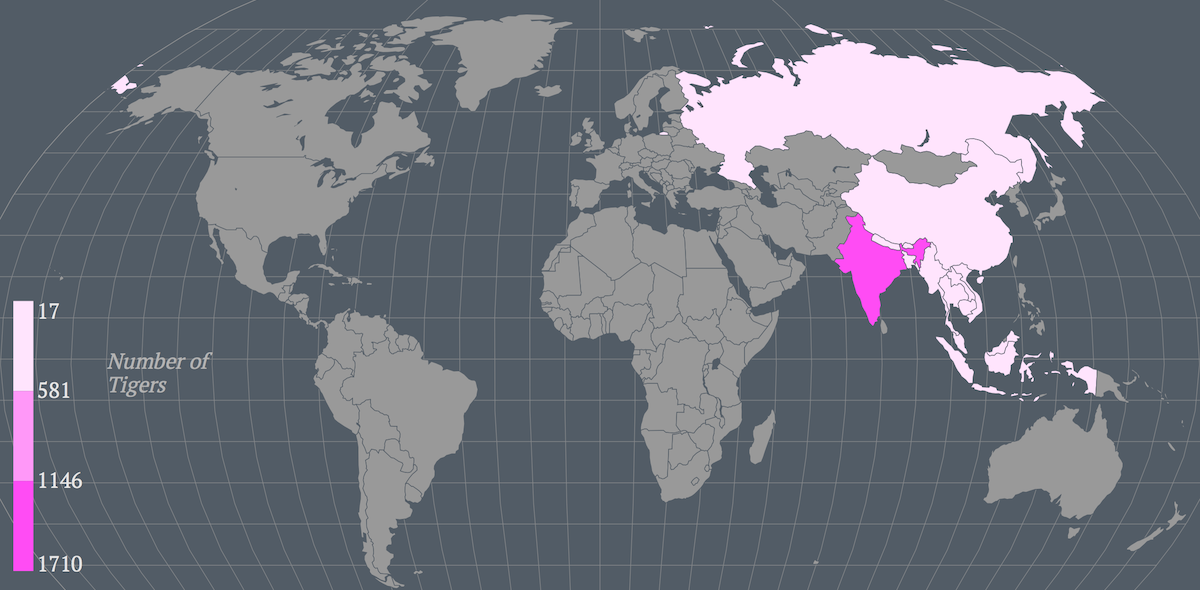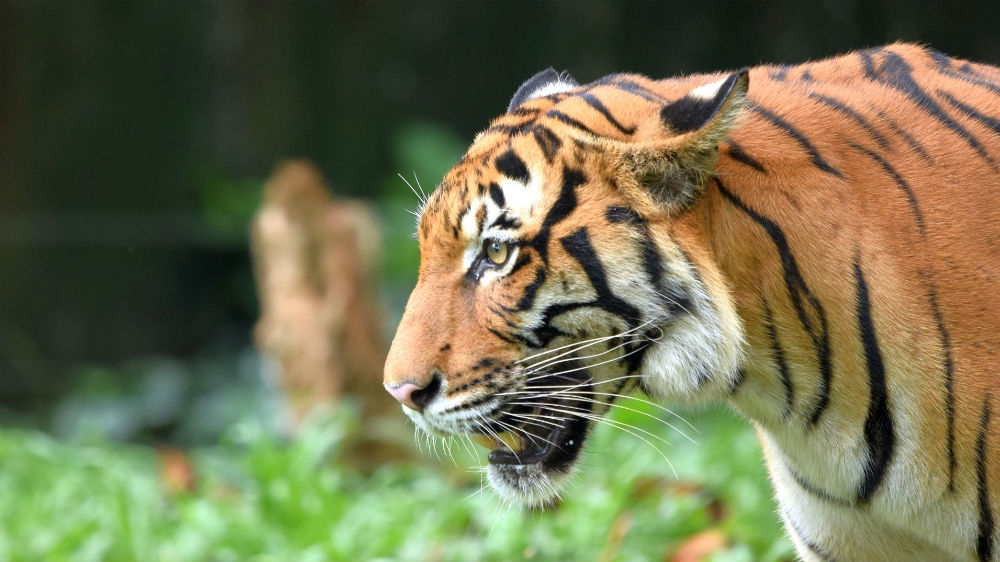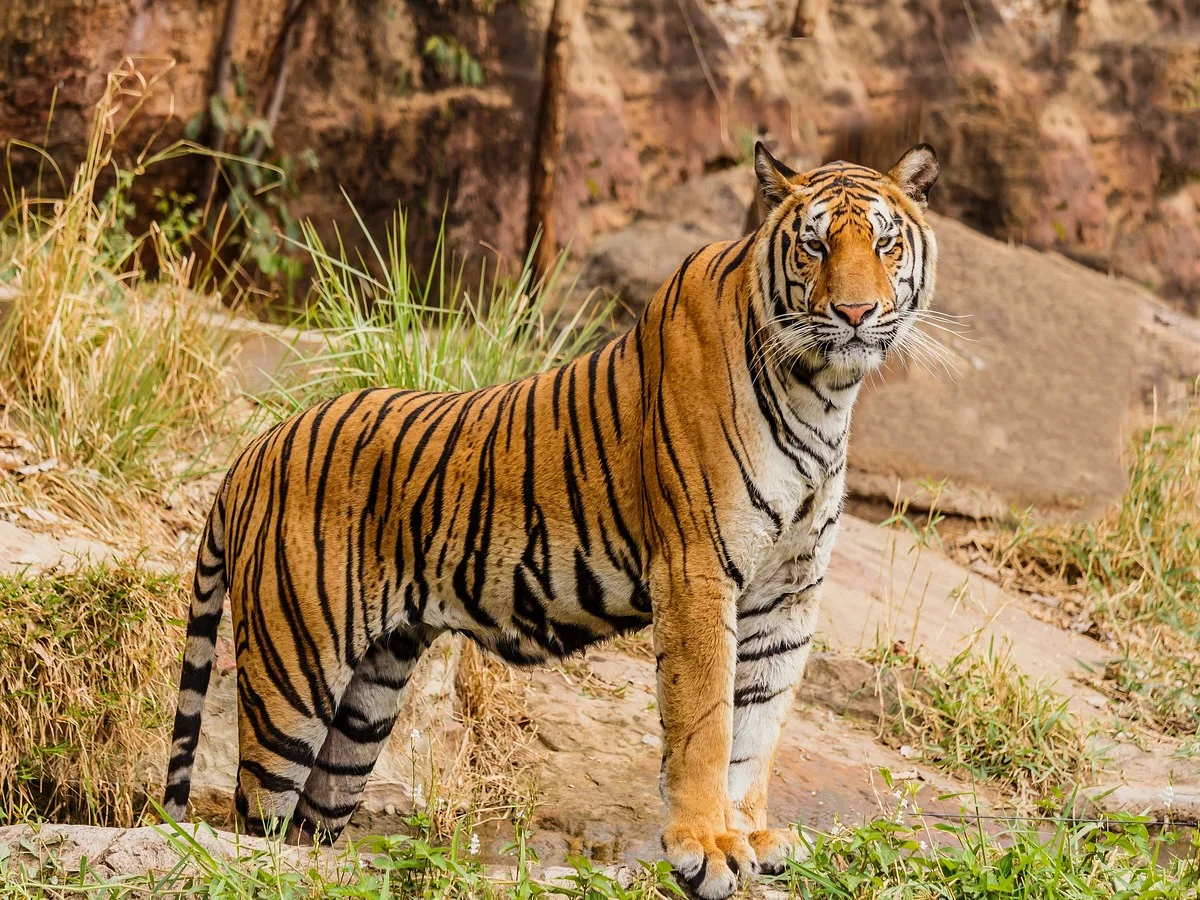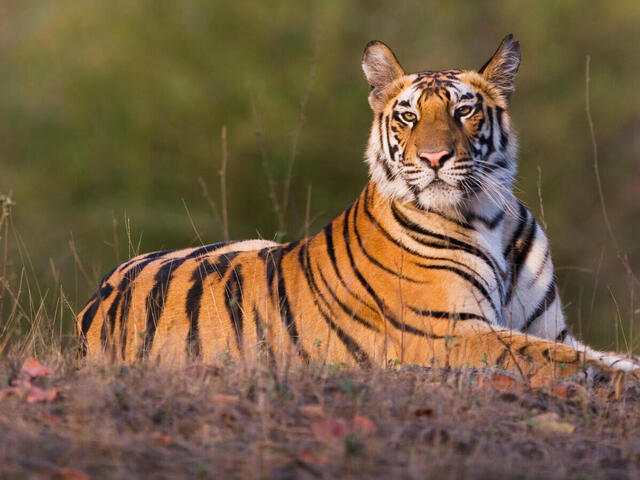STATUS
Critically Endangered


Tiger, (Panthera tigris), largest member of the cat family (Felidae), rivaled only by the lion (Panthera leo) in strength and ferocity. The tiger is endangered throughout its range, which stretches from the Russian Far East through parts of North Korea, China, India, and Southeast Asia to the Indonesian island of Sumatra. The Siberian, or Amur, tiger (P. tigris altaica) is the largest,
The tiger has adapted to a great variety of environments, from the Siberian taiga, where nights can be as cold as -40 C (- 40 F), to the mangrove swamps of the Sundarbans, where the temperatures reach more than 40 C (104 F). Tigers haunt the ruins of buildings such as courts and temples and are at home in habitats ranging from dry grassland to rainforest. Grasslands, mixed grassland-forests, and deciduous rather than densely canopied forests support maximum population densities, as these habitats maintain the highest number of prey species. Having evolved in the temperate and subtropical forests of eastern Asia, the tiger is less tolerant of heat than other large cats, which may explain why it is an adept swimmer that appears to enjoy bathing. Under stress it may climb trees.
The tiger usually hunts by night and preys on a variety of animals, but it prefers fairly large prey such as deer (sambar, chital, and swamp deer) and wild pigs. A special liking for porcupines, despite the danger of injury from their quills, is an exception. Healthy large mammals are generally avoided, although there have been recorded instances of the tiger's having attacked elephants and adult water buffalo. Cattle are occasionally taken from human habitations, and some tigers can thrive on domestic livestock.

STATUS
Critically Endangered

SCIENTIFIC NAME
Panthera tigris

POPULATION
3,900 in the wild

LENGTH
2M - 3.9M

WEIGHT
100-310 kg

HABITAT
RAINFORESTS

As top predators, wild tigers play an important role in maintaining the harmony of the planet's ecosystems. By preying on herbivores, tigers help to keep the balance between the prey animals and the forest vegetation which they feed upon.
Pressures from illegal killing, a shrinking food supply, and habitat loss led to the extinction of the Bali, Javan, and Caspian subspecies, and continue to threaten the survival of the remaining subspecies. ... Today, habitat destruction, human population growth, and a demand for tiger parts threaten the tiger's survival.
The favoured prey of tigers is various species of deer and the succulent wild boar. The availability of prey does, of course, depend on the specific area in which the tiger resides and what is most prolific
Tigers are typically scared of humans, and usually avoid contact - especially when facing groups of people. Tigers still live in the wild, and prefer to live in forested areas where they have natural shelter. They will rarely wander off into cities and villages.
India has habitat to support tigers in the country, but tiger numbers are low due to the degradation of forests, and rapid and overlapping of development with tiger




